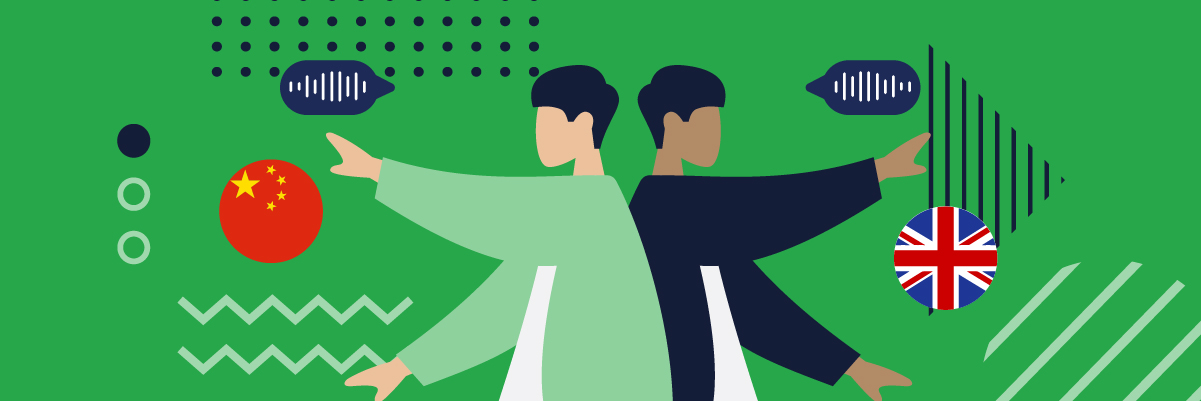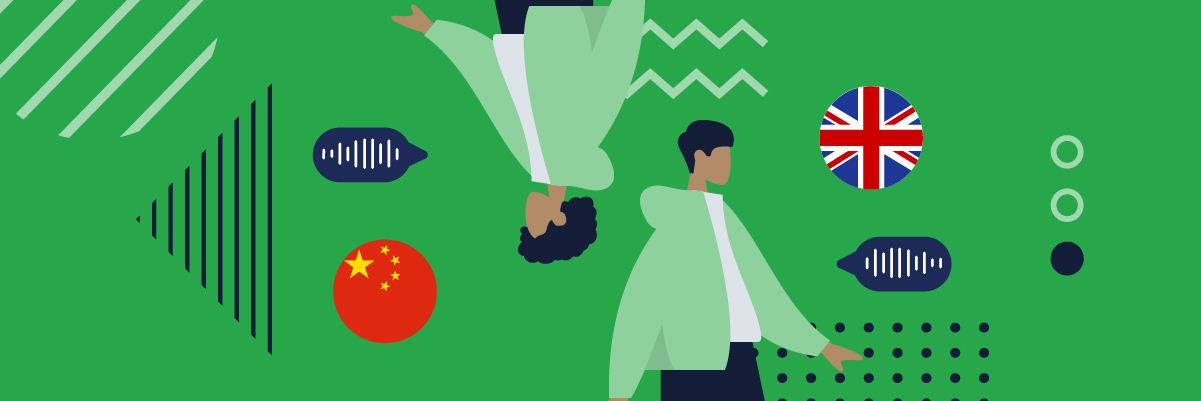Squiggles, hieroglyphics, or just alien symbols. How can a language be so far-flung from English? Indeed, the Chinese language has taken home the award for being the most convoluted language to learn. But as intricate and foreign as it is, it’s also beautifully poetic for those who have an ear for it. If you’re wondering how effective Chinese English translators are, you’ll need to know that there are two written versions of Chinese, for starters. For answers to an abyss of questions bouncing around in your head, this article on understanding the differences between traditional versus simplified Chinese will help.
Naturally, we whip out our nifty internet-connected gadgets on reflex any mention of translation. The million-dollar question here is whether online translators are accurate in conveying our original message exactly as it is intended. And we do literally mean a million dollars! Imagine the measures you’ll have to take to remedy a lousy advertisement translation. After all, the Chinese market is worth approximately 16.8 billion Yuan! As a bilingual writer fluent in both English and Mandarin, I’ve witnessed many ridiculous blunders caused by online translators. So if you’re looking for official localization-level type English to Chinese translations, buckle up while I dish out the deets on how you can prevent your brand from appearing on Engrish.com!
How Do Online Translators Work?
The main goal of artificial intelligence is to create a computer that can communicate fluently in human language. As such, online translators are a godsend technology, and we thank the stars for whoever invented them. The convenient and almost instantaneous output of results when we translate English to Mandarin is nothing short of astounding. It’s almost like translators have shrunken the world by digging a hole from the western hemisphere down to the far east. That said, machines are not human, and there are still certain pitfalls when you translate English to mandarin and vice versa. To gain some insights on why these shortfalls occur, let’s first decode the process of how online translators work. Here are the general steps that happen behind the scenes of your flat screen when you Google translate English to Mandarin:
Step 1: You type in or say a sentence in English and pick Mandarin (simplified or traditional) as the target language.
Step 2: The translator recognizes the English content. If not, it attempts to translate your original content to English first before pivoting the translation to your set target language.
Step 3: The AI technology looks for patterns through millions of documents and decides which appropriate words to use in your Mandarin translation.
Step 4: The neural machine prioritizes the translation of whole sentences rather than word-for-word translations. It does its best to consider the context of the content. After which, it rearranges and sentence structure accordingly to present the Chinese translation.

The Difference Between the Chinese & English Language Systems
As you can imagine, there are a million things that can go wrong at each stage. But what makes Chinese English translators more prone to inaccuracy is the stark contrarieties between both language systems. Here, we list some of the elemental nonconformities that differentiate the Chinese language from many other languages. In this article, we barely scratch the surface of the contrast between both languages. Although, the divergence of language structure mentioned here are often common pitfalls that result in inaccurate and sometimes ridiculous translations. They apply specifically to translations to and from the Chinese and English language.
The Use of Tenses
Drink, drinking, drank, drunk; sing, singing, sang, sung. We used to memorize how tenses play out in English in a sing-song manner. Ask any Chinese-speaking non-English speaker, and they’ll tell you how complicated writing in the present, past, active, and passive voice is to them. This is because the Chinese language usually only contains an active voice. Meaning there are no distinctions between the different tenses. Rather, to indicate tenses in a sentence, additional words are added to the sentence. With that in mind, think of the process non-human Chinese English translators go through before forming a fully translated sentence.
Here is a simple example to illustrate:
English: I am drinking the water.
Simplified Chinese: 我在喝水。
Traditional Chinese: 我在喝水。
Literal word-for-word translation: I am drinking water.
English: I drink the water
Simplified Chinese: 我喝水。
Traditional Chinese: 我喝水。
Literal word-for-word translation: I drink water.
English: I drank the water.
Simplified Chinese: 我喝了水。
Traditional Chinese: 我喝了水。
Literal word-for-word translation: I drink already water.
English: The water has been drunk.
Simplified Chinese: 水被我喝了。
Traditional Chinese: 水被我喝了。
Literal word-for-word translation: Water has been me drink already.
As you can see, the sentence structures are massively different, and the Chinese tend to express the same meaning in shorter sentences. The literal word-for-word translation is the result of what happens when you translate Chinese back to English. Undoubtedly, some of it sounds like gibberish. But it is meant to showcase the difference in both languages. Because of the self-learning AI technology integrated into many electronic translators, we don’t quite get as much hogwash as we ought to. That said, we cannot always derive perfect translations from them. As one with a foreign tongue, the right issue to address is how you can identify incorrect translations.
The Use of Idioms
Consider “the tortoise and the hare,” “once in a blue moon,” and “ace in the hole.” Just like how the English language expresses meaning through such idioms, Mandarin does the same. Albeit, rooting from different fables, abstract connotations, and cultural nuances. It is common for Chinese idioms to come in words of four, which makes it a beautifully poetic language.
Here are some examples to illustrate:
Simplified Chinese: 井底之蛙
Traditional Chinese: 井底之蛙
Literal translation: A frog at the bottom of a well.
Actual Meaning: Someone who has an ignorant and naive mindset because he or she can only see a small piece of the picture
Simplified Chinese: 没心没肺
Traditional Chinese: 沒心沒肺
Literal translation: Without a heart or lungs.
Actual Meaning: Used to describe someone who is cruel and heartless.
Simplified Chinese: 死去活来
Traditional Chinese: 死去活來
Literal translation: Die alive.
Actual Meaning: Describes a suffering that hovers between life and death. The idiom can be used to express an exaggeration of strong feelings.
Although Google translations may be able to get some of these contextual meanings right, some nuances are lost in literal translation. An example is the third “死去活来,” which Google literally translates to “die alive.” That pretty much butchers the poetic expression, don’t you think?
The Differentiating Tones
Today, we have the option of using online translators with verbal input. The handy technology has most certainly made the life of nomads in foreign lands easier. However, it can also be a pitfall when you translate mandarin to English since mandarin is a tone-sensitive language. While the pitch is mostly used to convey emotion in English, it holds specific meanings when applied to Chinese words. Both traditional and simplified Chinese are read the same way, although they are sometimes written differently.
The Chinese written system, unlike English, does not have letters. Instead, it is made of approximately 106,230 unique characters. Each character is usually one out of four tones, but it constitutes another meaning altogether when paired with another word. Indeed, the Chinese language is nothing short of befuddling!
Here is an example to illustrate the different meaning tones can convey:
Simplified Chinese: 我要睡觉 VS. 我要水饺
Traditional Chinese: 我要睡覺 VS. 我要水餃
Hanyu Pinyin Pronunciation: Wǒ yào shuì jiào vs. Wǒ yào shuǐ jiǎo
Translation in English: I want to sleep VS. I want dumplings
If you say both “我要睡觉” and “我要水饺” without a pitch, they sound identical. But add the varying pitch for the last two words, and you get completely different meanings. To the foreign tongue, Chinese tones are very difficult to master accurately. And, of course, unsurprisingly, is one of the reasons why some meanings get lost in translation.
The Verdict on Google Translate English to Mandarin
We’re not saying that online translators do not work for English to Mandarin and vice versa. We’re saying that although technology has progressed with leaps and bounds, it still doesn’t quite compare to the human mind. The complexity of our synapses, is after all, what makes us unique in evolution.
It’s more than okay to use online translators for informal purposes such as conversations and the occasional impromptu recipe translations. But human input is still imperative when it comes to mass communication, formal communication, and official documentation. This is especially so when Mandarin is part of the translation mix, considering how unique the language is. After all, it takes years to build a brand, but just one misprint to bring a good reputation down.
Getting Your Translations Accurate
Next comes the conundrum on how to derive accurate English to Chinese translation, and vice versa. For that, we recommend the following hacks to make sure you’re conveying the right message.
Use online translators for quick unofficial purposes only.
This includes anything personal, from texting your digital-age pen pal on WeChat to deciphering instructions on a Kung Pao Chicken recipe.
Hire a professional translator for official translations.
This includes brand localization, copy-written print ads, billboards, regulatory documents, certifications, presentations, and formal emails. While you’re at it, it’s probably not a bad idea to have a professional translator check your Chinese tattoo design before you get permanently inked either!
Get a native speaker to proofread your translation.
If you have a massive amount of content to translate and only a small budget to do so, there are ways to get an accurate translation. You can use free online translators to do the bulk of your work.
But always hire a native Chinese speaker to proofread the content before printing it officially.
Always use a human translator for creative content.
Language can be programmed, but wit, humor, puns, and nuances simply can’t. So when it comes to creative marketing content, we say go human. This includes translation or copy-writing of taglines, blog articles, slogans, and other branding elements.

Understand the different types of translators before hiring one.
Yes, there are different types of translators, all of which charge you differently. Here’s a breakdown of them to help you determine what you need:
- Technical translator: Technical translators translate instruction manuals, financial reports, and other technical documentation, most often in the IT, engineering, and electronics industry. They are knowledgeable of the industry’s jargon and terminologies.
- Scientific translator: If you’re writing a dissertation or publishing a medical journal, you’ll need to hire a scientific translator, better still, who is from the same field. The translator should have the capacity to correctly interpret specific chemical names, pathological diseases, or other technical terminologies.
- Judicial translator: This is a special category of translators certified to translate documents such as court proceedings, interrogation documents, and letters.
- Legal translator: Depending on the jurisdiction, some governments may require certified translators to translate warrants, summons, certificates, corporate statutes, and other official documents.
- Website, product, and copy translator: These translators tend to have a background in marketing and are hired when a brand is looking to bring its products to new regions. Many multinational brands hire translators to localize content in order to appeal and resonate with specific demographics.
- Multimedia translator: Whether it’s transcribing conversation or subtitling an infographic or a movie, hire a video or audio translator to make content accessible to other demographics in another language.
Chinese English Translators: Your Decision on Man vs Human
The world is shrinking as translators tear down the tower of Babel. But when you need to translate Chinese to English or translate English to Chinese, it’s best to understand your objectives before deciding between man and computer. It’s also important to note that Chinese isn’t just a single language. Rather, it umbrellas a family of seven different dialect groups. Some of them are read differently but written in the same way, whereas others differ. In all cases, always make sure you understand your audience and know where you’re going before attempting translations. You don’t want your words to fall on deaf ears or ridiculing ones after all!










